Who - Teen Cancer America
by Lisa Torem
published: 23 / 2 / 2013

intro
Lisa Torem assesses and reflects upon the work of Roger Daltrey and Pete Townshend's charity Teen Cancer America, which has recently opened centres in the United States
On a Saturday night, teens spilled into a high school gym, wearing spaghetti straps and stilettos or designer jackets and pressed trousers. They resembled celebrities on the red carpet and their enthusiasm was infectious. A freshman with purple-streaked hair did a handstand; two more huddled awkwardly in the coatroom flashing nervous smiles at a pretty classmate. All too soon, a guard asked a young woman to bundle up before bracing the bitter cold. Parents waited outside, anxious to hear about the Harlem Shake. That night, the teens forgot about algebra-trig and driver’s ed. Yet, sadly, statistics indicate that a hundred forms of cancer could strike any of these innocents, radically altering carefree lives. Being diagnosed with cancer may mean leaving all they know and facing an extended stay in the standard hospital setting, sandwiched between older adults and toddlers; challenged by feelings of isolation. Some adults refuse to let this happen. Especially Roger Daltrey. Even when venturing into worlds unknown, the former sheet metal worker and teen rebel turned self-made man and charismatic vocalist uses his head, heart and arms to help make a difference in the lives of youth impacted by cancer. As early as the 1960s, Pete Townshend‘s jangly anthem, ‘I Can’t Explain,’ gave voice to the British mod movement. A passionate, prolific composer/guitarist, iconic for wielding a windmill arm onstage, Townshend’s hundred-plus song collection is noted for conveying rebellious spirit, joy and teenage angst. The Who’s music continues to attract an audience of anywhere from “eight to eighty,” and at a National Press Club event, Townshend explained that ‘Our demographic is certainly not teens anymore,” but “the continuum is the teen that we all carry inside us.” And that internal spirit pulses the powerhouse duo. Tirelessly teaming with other professionals, both artists have made life for teen and young adult cancer patients more palatable by advocating for teen and young adult units where they can be together - offering each other support, hanging out, and allowing them to still be teens. Teenage Cancer Trust (TCT), which developed in 1990 and now boasts 21 units across the UK, ignited this flame and compelled Daltrey and Pete Townshend to create, a similar organization in America, where they have already raised millions on behalf of Teen Cancer America. For a decade, they have performed annually at London’s Royal Albert Hall for TCT, and last November they played a benefit for UCLA’s Teen Cancer America unit. On February 28th, they wrapped their North American ‘Quadrophenia’ tour at The Theater at Madison Square Garden, using proceeds to establish a future Teen Cancer America unit at Memorial Sloan-Kettering. At the UCLA Daltrey/Townshend Teen and Young Adult Cancer Center, teens and young adults receive treatment at the Ronald Reagan UCLA Medical Center or the UCLA Medical Center, Santa Monica, where a teen “Zone” is up and running; a new teen lounge is in the works. This world-renowned, highly specialised hospital was the launching pad for Teen Cancer America. Members of the impressive TCA Board and cancer survivors first visited TCT units in the UK in 2010. The former includes neurosurgeons, media, marketing, finance and real estate experts, the CEO of Teenage Cancer Trust and people whose lives have been torpedoed by cancer. Their diverse skills are essential tools, which come in to play regularly whilst fund raising, brainstorming and creating new units. The individual stories vary, but the strength and resolve demonstrated by so many are heartfelt and inspirational: A vivacious star athlete retains his dignity and social standing despite a perilous cancer diagnosis, and a lovely cancer survivor uses her creativity to design physical spaces, which inspire others. Although derailed in the prime of their lives, many others communicate through social networks to ease the pain of peers, even in the midst of chemo and grief. Rebecca Rothstein, Mindy Brooks and Alexis Reilly discuss Teen Cancer America and how Townshend and Daltrey’s dream has transformed them. “In November, a year ago, Roger agreed to do a show to raise money for autism awareness and for the UCLA general fund which I am on the Board of. We were very successful and because we’d been friends a long time I said, ‘Listen, you have been fantastic and you’re always so generous with your time. What can I do for you?’ “He said, ‘It would mean everything to me if you would bring my Teen Cancer Trust to America,’ and I said I could do that. We began the process of getting a charity formed – getting a board and people together that had a shared vision, and then had another event where we raised a million dollars to open our first teen cancer centre at UCLA, which has been open about eight months.” “There was an enormous amount of interest from people across the country when we opened it and we had massive, ongoing inquiry about how people could help. I swear to God I have the best board I could have ever imagined.” “It is very organic. We delved into building what our goals for the organisation were and made decisions based upon that. We formed committees, subcommittees and then started getting advisors.” Maintaining the standards that TCT in England set was just one challenge. There were others. “How do we do ongoing fund raising and who wants to have units? How do we prioritise who gets the next units?” “We are actively working with hospitals nationwide who have reached out to us because they know the need is out there and that there is a gap in how the US supports teens and young adults with cancer.” We have no shortage of people who want units and so we’re just moving as fast and as furious as we can. Because both countries have distinct health care systems, Rothstein emphasises: “We try to duplicate the success of TCT using their standards to the best of our ability, but since they have a different health care system we would never be able to do it identically, but we come close and we share the same core philosophies of TCT.” “These teens and young adults between the ages of 12 and 23 have to go through so much at such a critical time in their lives. It is terrible.” The board hopes to change the status quo. “Our unit at UCLA, the only one in America right now, is at the end of a floor, behind closed doors and self-contained. There is a lounge and TV sets and the kids walk around.” “As you might guess most of these kids feel pretty sick. They’re not happy but they are together being supported by others going through cancer. The interaction is fantastic and very healing.” When Roger visits these units, he mingles with teens, looking like part of the family. “He’s unbelievable,” agrees Rothstein, “’So how’s it going for you? You know it’s pretty shitty not having your hair, right?’” “He just sits down,completely comfortable and just chit chats.” “Roger knows that a lot of them don’t know who the Who is. They don’t know him as an icon like they would know Justin Beiber…But his personality is so gregarious and so comforting that he immediately gets them to warm up to him and love him.” “Our goal is to have more of a communal kind of place where kids get together and help each other,” she adds. “They have lost their hair in almost every case. There’s nothing about that at that age that is okay. What we try to do is give them a place where they can feel safe and supported.” “There is camaraderie. They’ll be walking around the halls with their bags attached to their poles. They will wander into somebody else’s room, sit and talk and hang out. They’re all basically the same age and having the same misery.” “Our goal is to have a teen cancer centre in every major city in the country – it will take us a few years to accomplish that goal, but we’re opening them up fast and furious. At the early stages, it’s been a little bit harder than what we expected.” “Because he’s a world famous rock star, Roger and Pete are friends with a bunch of people who are world famous rock stars. We’ve had support from Dave Grohl, Robert Plant and Elvis Costello. Those are just a few. People have offered to do shows for us across the country, and so we have an expectation of enlisting more and more support from the music industry.” “Their fan bases are teens and young adults also so they’re happy to lend their name and support to our organisation. We are so grateful for their help. We have an expectation of continuing to lean on them. We call out to somebody,’ Can you help us out? I know you’re on tour – can you give us one of your shows?’ And they say, ‘Sure.’” “We’re expecting to open up more units with the help of others so we don’t have to lean 100 percent of the time on Roger and Pete. This is a mission from our hearts and we really want to make this happen.” Mindy Brook’s son, Hunter, was fourteen when diagnosed and admitted to the hospital. “The overall experience seemed directed towards a younger patient. This makes sense since most of them were younger, but acknowledging and addressing the needs of teens should be considered as well. Hopefully that is starting to change through the work we are doing and the recognition that teens and young adults have unique needs in the same way that young children and adults do,” she said. Brook’s frustration grew as she discovered that “throughout the hospital there were images of young children. The movies and video games that were available on the floor were only G rated. The effects of cancer and recovery weren’t part of the treatment protocol and there was no guidance with regard to the psychological impact of cancer, such as including a therapist as part of the team treating Hunter.” And exiting the program didn’t mean life returned to normal. “After cancer, my son was cleared to do anything he wanted. As a previous athlete who no longer had his muscle mass, he, nor I, had guidance as to how to rebuild his body. How could or should the school support him?” “I found psychosocial programming whereby Hunter would be able to connect with other teens and young adult survivors such as camps, retreats, etc. were few and far between.” After meeting Roger and Rebecca, things began to click. “It really was about two years of me trying to make a difference. Roger was trying to make it happen and Rebecca was trying to support that. Through all of my ventures, I found out that they were coming to Yale to visit. I met them both there and started working with Rebecca and that’s where we started shaping the actual organisation.” “Our program has four pillars. The first one is the unit, the second is social services, the third is education and the fourth is awareness. Everything begins in the hospital.” “In a perfect world, there would be an actual Teen Cancer America staff that would work closely with the hospital staff, education for the clinicians and in the schools a curriculum.” “How do I make sure that I’m careful that I don’t have cancer and how do I support someone with cancer? As a teacher, how do I help a student who has cancer? There is a whole gamut. How do I help in the workplace? There are so many educational areas where there are opportunities.” “As far as social services – my hope is to extend the existing program. My hope is that, we would be associated with, let’s say, a fitness club like Planet Fitness and all teens and young adult survivors would get a free membership for a period of time, while personal trainers would donate their services for a period of time. There would be camps, retreats and getaways that would include nutrition and fitness.” “I hope we really ignite a movement around this. Susan G. Komen has done a fantastic job of raising awareness around breast cancer. I hope we can similarly ignite a movement and raise awareness around the need to support teens and young adults with cancer.” I commended Brooks on her perseverance when researching solutions for Hunter. “You would do the same,” she responded, modestly. When asked about her son now, she paused. “That’s a really hard question. My son no longer has cancer, so he’s doing great from that perspective, but as a survivor of brain cancer he has had late effects - he has virtually no endocrine system so he probably takes six to eight pills a day, a shot every night and a very large shot every two weeks. That is hard for a seventeen-year-old.” “He is brilliant academically, has no neurological deficits and he looks great. You wouldn’t know he had cancer, but sometimes he thinks people expect more from him because they don’t know his story.” Brook’s voice softens when she speaks of Daltrey. “What he has done takes my breath away. Not only has he done it for ten years in the UK, bringing it to the United States, as well, but he wasn’t touched by cancer. When you read about why he’s doing this you realise that these teens and young adults gave him the lifestyle that he has and this is his giving back. You can tell that it means so much to him.” “My son went up to Pete and Roger and they had all the time in the world for him. You can see how much they care. It’s not just an artist saying, ‘Okay, I’m checking this part off of my list.’ It’s so heartfelt and loving.” “When I met him in Yale, all he wanted to do was see and talk with the kids. The way he spoke to my son and made eye contact…He was lovely. It was very touching.” At UCLA they have a teen advisory board which is comprised of young adults who, like Alexis Reilly, had cancer as a teenager. They are deeply involved in the development of the unit. “During most of our monthly meetings, the architect and/or interior design team is present to show us new design ideas for the unit. Currently the wall decorations and entry are almost complete and we’re working on the lounge, where patients can come and spend time together watching television, playing games, eating, using the computer etc., as a way to get out of their rooms and spend time with others.” “The unit is designed to create a sense of community for the patients, which is so important to this age group when they are feeling isolated from their peers in school. Teen and Young adult patients will be able to see and interact with patients who look like them, and are experiencing the same things inside and outside of cancer.” Reilly, now 24, was diagnosed with Hodgkin’s Lymphoma at 15, after her freshman year of high school. She was treated with chemotherapy for three months and radiation for three months at Lucile Packard Children’s Hospital at Stanford in Palo Alto, CA, where she grew up. She is currently getting her MSW at UCLA. “Teens and young adults are going through a transitional period of life that is very disrupted by cancer: high school, transitioning to college, seeking independence, starting a family, getting married - there are many unique issues that come up that children don’t deal with and older adults are past. Ideally this centre will provide them with the support they need to get through these difficult times and decisions, either through staff or peers.” Do the teen cancer patients wish to discuss their illness with others? Reilly said, “For the most part, it is okay to ask someone about their cancer, how they are feeling etc., but after that, talk about normal every day things. Especially for teens and young adults, acknowledge what they are going through but most likely, they are trying to keep as "normal" of a life as possible and still have the same interests they did before they were sick and as their peers do -- they may just enjoy it in a different way now.” Reilly met Daltrey when he was interviewed on ‘The Jimmy Kimmel Show’ and a few members of the advisory board attended the taping. She said, “It’s wonderful to see him using his celebrity for this cause. He recognises that teens and young adults have specific strengths in dealing with cancer, but also unique limitations and concerns. This population has been referred to as the “AYA (Adolescent Young Adults) Gap” over the past several years and Roger Daltrey, Pete Townshend, along with TCT, are working hard to close it.” Lisa Torem would like to offer special thanks to: Mindy Brooks, Alexis Reilly, Rebecca Rothstein and Simi Singer for their generous time spent contributing to this article
Band Links:-
https://www.thewho.com/https://www.facebook.com/thewho
https://twitter.com/TheWho
Have a Listen:-
Picture Gallery:-



Visitor Comments:- |
| 632 Posted By: mom mom reilly, broomall Penna on 16 Jul 2013 |
|
We could not be more proud of Alex Reilly our granddaughter who had achieved so much for someone who had gone thru so muchand still continues to work for others who are going thru what she went thru.
she could not be more pleasant and beautiful in every thing she does.
|
| 612 Posted By: Sara Novelli, Greenfield, Massachusetts USA on 14 Mar 2013 |
|
Roger should be nominated for sainthood!
|
profiles |
|
Fifty Years of The Who, Proud Galleries, London (2014) |
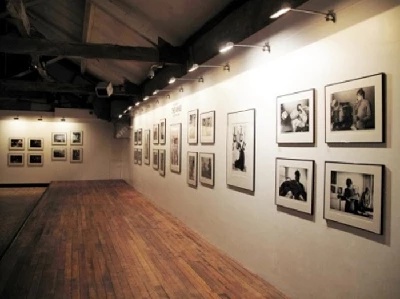
|
| Dave Goodwin attends a new exhibition of photographs on The Who at The Proud Galleries in London |
| Who I Am (2012) |
live reviews |
|
Palau Sant Jordi, Barcelona, 14/6/2023 |
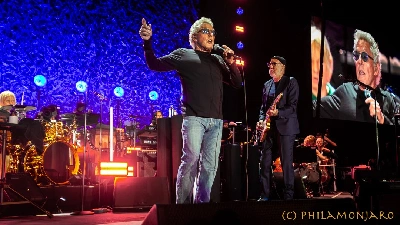
|
| Philamonjaro finds The Who on explosive form as they perform with an orchestra on the first date of an European tour at the Palau Sant Jordi in Barcelona. |
| Blossom Music Center, Cuyahoga Falls, Ohio, 10/9/2019 |
| Hyde Park, London, 2/7/2006 |
favourite album |
|
The Who Sell Out (2021) |
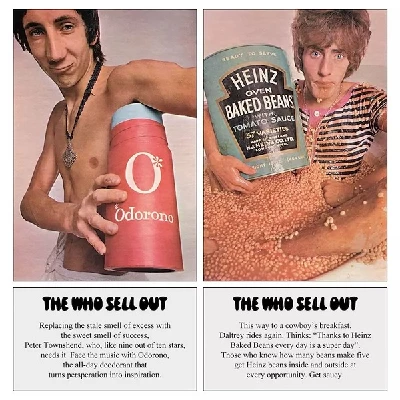
|
| In our 'Re:View' section, in which our writers look at albums from the past, Malcolm Carter finds that The Who’s finest album, 1967's 'The Who Sells Out', is given the box set treatment it deserves with five CDs, two vinyl 7 inch singles and a book worth the price of admission alone. |
| Live at the Isle of Wight Festival 1970 (2013) |
features |
|
The Image That Made Me Weep (2020) |
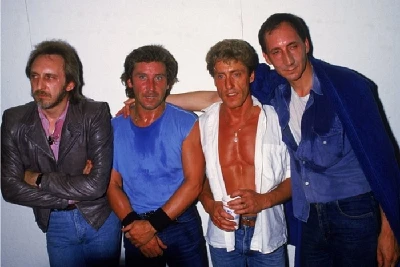
|
| In 'The Image That Made Me Weep' John Clarkson reflects on a photograph of The Who taken backstage after their performance at Live Aid. |
| (Raging Pages) Mike Segretto: All That’s Left to Know about Fifty Years of Maximum R and B (2014) |
photography |
|
Photoscapes (2023) |
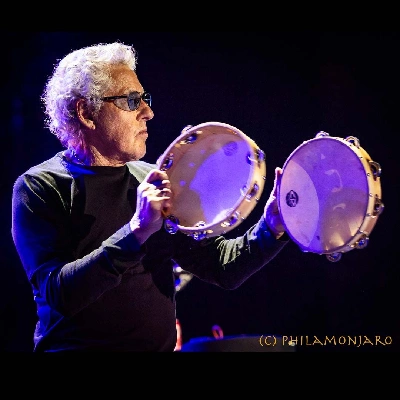
|
| Philamonjaro photographs The Who with the Orquestra Simfònica del Valles at the Palau Sant Jordi in Barcelona. |
reviews |
|
The Stereo Bonus Tracks (2021) |

|
| Fantastic digital only EP which provides alternative versions of The Who's 1967 album The Who Sells Out', which is being reissued in an expanded version |
| Who (2020) |
most viewed articles
current edition
In Dreams Begin Responsibilities - #15- On Being Dignified and Old aka Ten Tips From Jah Wobble On How To Be Happy.Dennis Tufano - Copernicus Center, Chicago, 19/7/2024
Elliott Murphy - Interview
Wreckless Eric - Interview
In Dreams Begin Responsibilities - #16: Living in the Minds of Strangers
Adrian Gurvitz - Interview
In Dreams Begin Responsibilities - #17: Tom Robinson
Norman Rodger - Interview
Chris Spedding - Interview
Penumbra - Interview
previous editions
Heavenly - P.U.N.K. Girl EPIn Dreams Begin Responsibilities - #5 - ‘We all have good intentions/ But all with strings attached’: Music and Mental Health Part 2
Trudie Myerscough-Harris - Interview
Allan Clarke - Interview
Dwina Gibb - Interview
Joy Division - The Image That Made Me Weep
Beautiful South - Ten Songs That Made Me Love...
Jimmy Nail - Interview
Nerve - Interview
One Thousand Violins - Interview
most viewed reviews
current edition
Groovy Uncle - Making ExcusesPhilip Parfitt - The Dark Light
Hawkestrel - Chaos Rocks
Jules Winchester - The Journey
Deep Purple - =1
Bill Wyman - Drive My Car
Ross Couper Band - The Homeroad
Popstar - Obscene
John Murry and Michael Timmins - A Little Bit of Grace and Decay
Splashgirl and Robert Aiki Aubrey Lowe - More Human
related articles |
|
Roger Daltrey: Live Review (2018 |
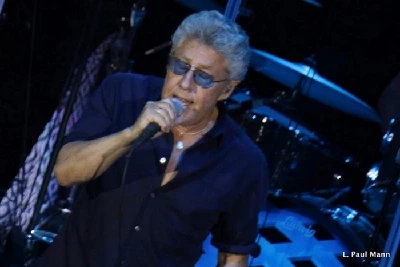
|
| L. Paul Mann watches Roger Daltrey pull out some old Who gems at Vina Robles Amphitheater in California. |
| Roger Daltrey: Live Review (2018) |
| Simon Townshend: Interview (2016) |
| Simon Townshend: Interview (2015) |
| Simon Davies: Profile (2015) |
Pennyblackmusic Regular Contributors
Adrian Janes
Amanda J. Window
Andrew Twambley
Anthony Dhanendran
Benjamin Howarth
Cila Warncke
Daniel Cressey
Darren Aston
Dastardly
Dave Goodwin
Denzil Watson
Dominic B. Simpson
Eoghan Lyng
Fiona Hutchings
Harry Sherriff
Helen Tipping
Jamie Rowland
John Clarkson
Julie Cruickshank
Kimberly Bright
Lisa Torem
Maarten Schiethart